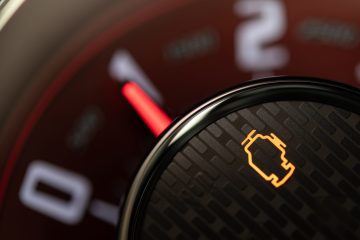ATS Euromaster is urging motorists not to compromise on tyre safety by opting for part-worn tyres in order to save money.
The garage chain is constantly monitoring consumer trends, and has seen an increasing number of drivers opting for part-worn tyres over new tyres. Although the aftermarket highlights the potential danger of part-worn tyres, the fact they cost less than new is appealing to motorists at this time.
With financial pressures brought about by the current cost of living crisis, the temptation to ‘buy cheap’ is intense for many vehicle owners, who are faced with a raft of spiralling household expenses this winter; exceptionally high energy costs, fuel costs and the highest rate of inflation for 40 years.
Various surveys and studies have recently highlighted how motorists are looking to save money when considering vehicle maintenance. These behavioural changes are impacting decisions around part-worn tyres, with more opting for this solution to a tyre that needs replacing.
ATS Euromaster, while understanding why this may be tempting to some, stresses that this practice is not only false economy, but also (and more importantly) potentially dangerous to the vehicle owner and other road users.
The perils of part-worn tyres
“Safety is one aspect that should never be compromised,” the company states. “Part-worn tyres are not as safe, with diminished tread reducing grip on the road. This is especially dangerous in wet or icy conditions with an increased risk of aquaplaning in wet weather. Tread depth can also affect braking performance and handling of a vehicle. Damage is hard to detect in part-worn tyres and they will not be as puncture resistant as new tyres.
Another issue is the amount of tread left on part worn tyres. Those fitted to a vehicle may only have half of their lifetime tread left, meaning they will need to replaced sooner than if fitting new. This leads to a false economy, as drivers will pay out for another tyre sooner than if a new one was fitted.
The legal tyre tread depth in the UK is 1.6mm across the central three-quarters of the tyre for cars. The tread must meet this minimum depth across its entire circumference. Those caught with illegal or ‘bald’ tyres, could face a fine of £2500 per tyre, so potentially £10,000 if all four are not up to the legal standard. Penalty points are also applicable, with three points per illegal tyre on a driver’s licence, which could lead to disqualification. This can make insurance claims invalid. So, there is a lot at stake, with loss of life or injury being the most devastating.
Stopping distances affected
Yet a recent study conducted by the Director of the Centre for Automotive Industry Research at Cardiff University and commissioned by Halfords, the study shows that when driving on or under the tyre tread legal limit in the UK, the dangers posed could be more than those of drink driving. With tyre tread at 1.6mm, braking distances could increase by over a third compared to those running at 4mm or more.
With this evidence in mind, Halfords is calling for the legal tyre tread limit to be raised, in order to improve road safety. Tyres are also a major cause of MOT failures, and with plans for MOT frequency to change under consultation, tyre safety is more important than ever, a problem with part-worn tyres.
RoSPA (Royal Society for the Prevention of Accidents), recommends changing the tyre once the tread level wears down to 3mm. This is 1.4mm above the legal minimum but is based on various studies conducted into tread depth and the impact it can have on road safety.



